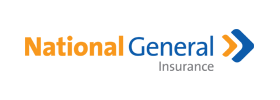The IRS issued guidance in November clarifying the tax treatment of PPP loans that have not been forgiven by the end of the year the loan was received:
- Businesses are not taxed on the proceeds of a forgiven PPP loan, so the expenses are not deductible.
This means that the taxpayer sees neither harm nor benefit, since the taxpayer has paid nothing out of pocket.
Here is how this looks on your tax return, according to bench.com:
A C-corporation receives $100,000 in a PPP loan, uses the money entirely on payroll and qualifies for loan forgiveness.
The $100,000 won’t be listed as taxable income on the tax return.
BUT, the tax deduction the business would normally get (about $21,000) won’t be allowable. So, surprise — you have an extra $21,000 tax liability (assuming 21 percent corporate tax). You did receive a net $79,000 from the program, which you have already spent, but which you might not have had otherwise. - Businesses are encouraged to file for forgiveness as soon as possible. If a business believes a PPP loan will be forgiven in the future, expenses related to the loan are not deductible, whether the business has filed for forgiveness or not.
- If a PPP loan is expected to be forgiven but it is not, the business WILL be able to deduct expenses.
According to the CARES Act, a forgiven loan amount won’t be included in taxable income.







































